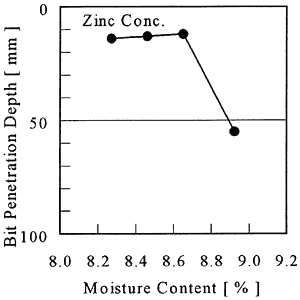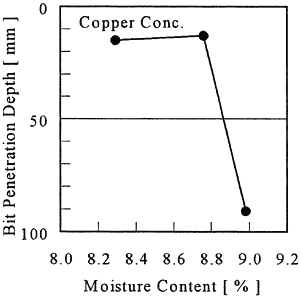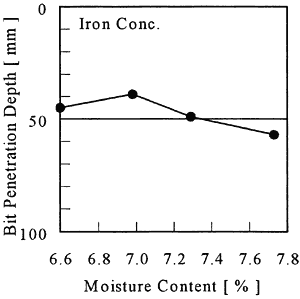Samples were tamped by the tamper, of which the diameter was 100 mm, at 120 kPa for Iron Conc. and Galena and at and 90 kPa for the other samples in tamping pressure, taking the unit weight and the depth of the cargoes into account. Fig. 8 to 11 show the results of the tests. The FMPS and the TMLS determined by the tests are given Table 3. In the test for Nickel Slag, the penetration depth of bit were more than 50 mm regardless of moisture content.

Fig. 8 Result of the penetration test for Zinc Conc.

Fig. 9 Result of the penetration test for Copper Conc.

Fig. 10 Result of the penetration test for Iron Conc.

Fig. 11 Result of the penetration test for Galena
Table 3 FMP and TML by Penetration Test

5.6 Permeability measurement
The essential phenomenon of liquefaction is increase of pour pressure which depends on resistance of water flow through void space. The property representing the water flow through void space is called permeability which is represented by "Darcy coefficient". It is the coefficient on hydraulic conductivity calculated by the following formula:
kT = (L・Q)/(h・A・t)
where,
kT: Darcy coefficient;
L: Height of specimen;
Q: Amount of water overflow in period "t";
h: Head;
A: Area of specimen; and
t: Period of measurement.
前ページ 目次へ 次ページ